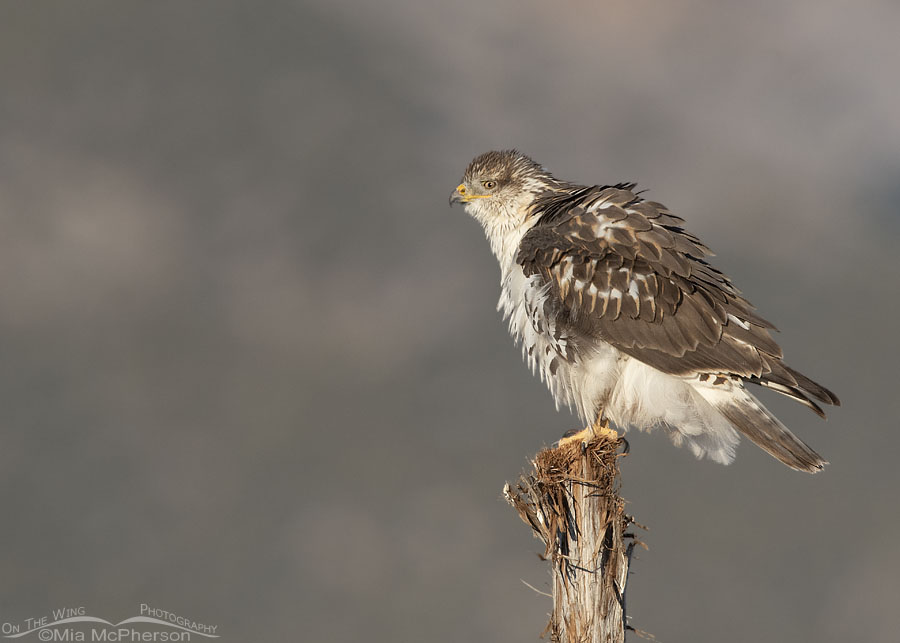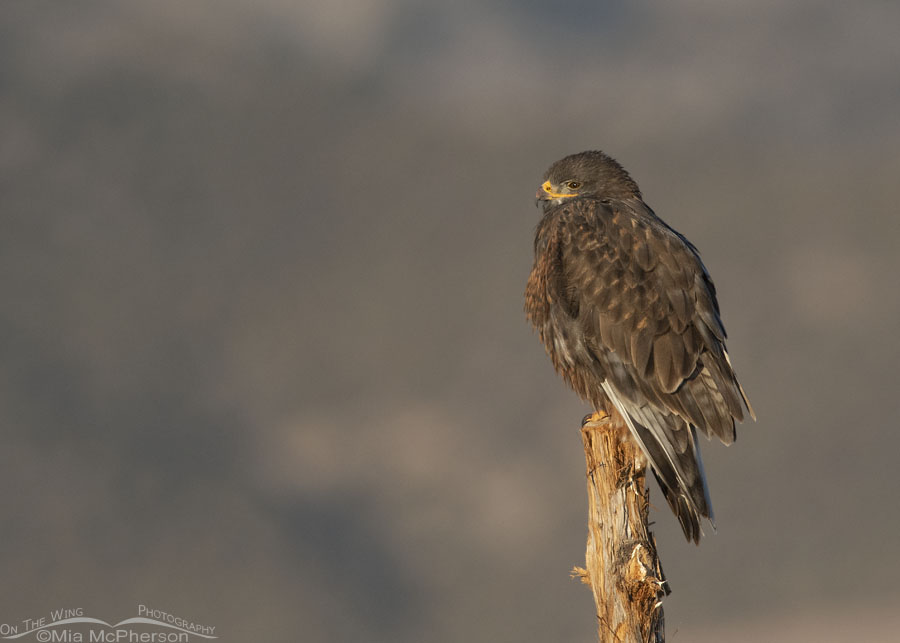 Rousing immature Ferruginous Hawk on a fence post in the West Desert – Nikon D500, f7.1, 1/1250, ISO 640, Nikkor 500mm VR with 1.4x TC, natural light, not baited
Rousing immature Ferruginous Hawk on a fence post in the West Desert – Nikon D500, f7.1, 1/1250, ISO 640, Nikkor 500mm VR with 1.4x TC, natural light, not baited
The past couple of weeks on some of my journeys to the West Desert of Utah I have been able to have a few long distance views of Ferruginous Hawks and that has me excited. Ferruginous Hawks are stunning raptors and the largest buteo in North America. During the summer when I spend most of my time high in the Wasatch Mountains I don’t see Ferruginous Hawks because alpine habitat is not the habitat they prefer. These hawks prefer low elevation, open areas in grasslands, sagebrush steppe, deserts and saltbush-greasewood shrublands. The foothills of the sky island mountains of the West Desert provide the habitats that they prefer.
Note: Ferruginous Hawks are year round residents in Utah.
One of the Ferruginous Hawks I’ve seen in the past couple of weeks was an immature light morph and although I only got long distance views of it I’ve been hoping that it will stick around and allow for closer views of it like I had last year with the hawk in the photo above. The young Ferruginous Hawk I photographed last fall preened, roused, yawned, scanned the grasses for prey, took flight, and I took several hundred photos of it.
 Early morning dark morph Ferruginous Hawk in the West Desert – Nikon D500, f7.1, 1/1250, ISO 800, -0.7 EV, Nikkor 500mm VR with 1.4x TC, natural light, not baited
Early morning dark morph Ferruginous Hawk in the West Desert – Nikon D500, f7.1, 1/1250, ISO 800, -0.7 EV, Nikkor 500mm VR with 1.4x TC, natural light, not baited
There were several days when I spotted and photographed an adult dark morph Ferruginous Hawk in the same general area as the immature light morph hawk. This dark morph adult may have even chased off the younger bird because I didn’t see the younger bird after I started finding this gorgeous dark morph Ferruginous Hawk.
I see dark morph Ferruginous Hawks far less frequently than I do the light morphs. When I have one of these beautiful raptors in my viewfinder I put all of my focus on them. I was able to photograph this Ferruginous Hawk on several trips out into the West Desert last year.
These hawks were called Buffalo Hawks because when bison were more plentiful they often included the bones of bison when building their nests.
I hope to spend time observing and photographing these large birds of prey soon.
Life is good.
Mia
Click here to see more of my Ferruginous Hawk photos plus facts and information about this species.


Such beautiful animals! So glad you’ve shared these two today.
Majestic and marvellous.
They are beautiful. They behave more like eagles. They are Haley’s favorite bird.
You’re lucky to have them year-round . Although the numbers must be small because you don’t post them very often. I’ve noticed that you describe first year Redtails and Ferruginous as “immature” rather than juvenile. Why is that? Thanks,John
Lovely images! Our migrants should be showing up in southern Arizona any day now.